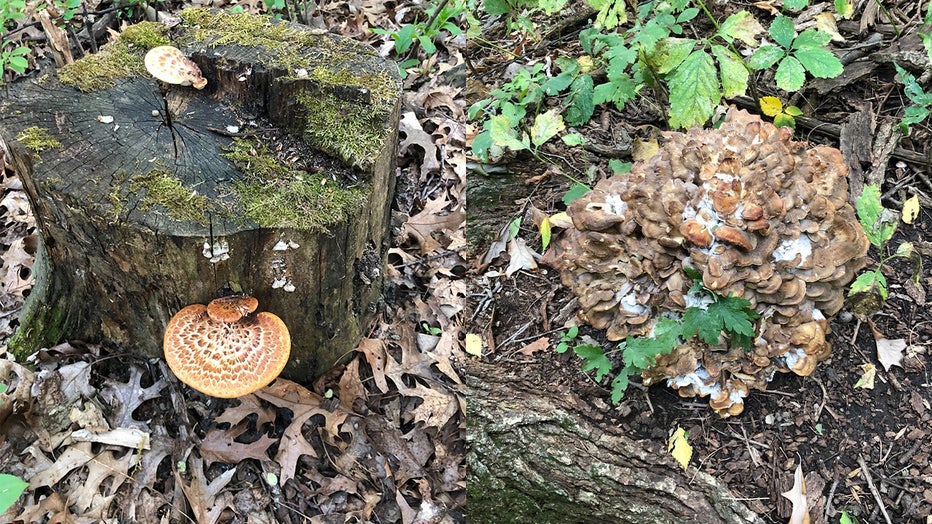Minnesota sees surge in calls to poison control centers as wild mushrooms thrive
Minnesota mushrooms: Increased reactions reported
Foraging for mushrooms can be a popular Minnesota pastime to get into nature while the weather is nice, but people misidentifying species has led to an increase in sicknesses throughout the state this summer.
MINNEAPOLIS (FOX 9) - Wet and warm weather this spring and summer across Minnesota has allowed mushrooms to thrive, which has led to a surge in calls to poison control centers.
What we know

Mushrooms growing in Minnesota. (FOX 9)
The Associated Press (AP) is reporting calls to the Minnesota Regional Poison Center were up 150% from April through July over the same period in 2023. Workers at the center took 90 calls for potential exposures to poisonous mushrooms from April to July, up from 26 calls over the same time in 2023.
The figures do not include all the calls the center got about whether the mushrooms growing in people's yards are safe or good to eat.
Poison control calls were also up nationwide, too. America's Poison Centers reported calls were up 26% across all states and territories from April through June of this year.
"There are probably a couple areas in the country that are experiencing large case volumes that could be related to different weather patterns," Kait Brown, the clinical managing director of America's Poison Centers, told The AP. The office doesn't track state-by-state data, though.
Wet, warm summer is to blame
The wet, warm weather in Minnesota this spring and summer has led to an increase in wild mushroom growth, and with that a risk for poisoning, Hennepin Healthcare said in a July 18 press release.
"The metro area of Minneapolis-St. Paul itself is having a huge year for mushrooms due to the previous few years of severe drought followed by this year’s extremely wet and cool spring, with consistent moisture thereafter," Tim Clemens, a professional forager and teacher who consults for the Minnesota poison center, told The AP.
Wild mushroom safety tips
Here are safety tips if you encounter wild mushrooms, according to Hennepin Healthcare and the Minnesota Regional Poison Center:
- Never pick and eat a wild mushroom unless it has been identified by a mushroom expert. The only safe mushrooms are ones that can be purchased in the grocery store.
- Supervise children while playing in the yard to minimize the chance of accidental ingestions.
- Teach children to ask before eating something they find outdoors.
- Cooking a poisonous mushroom does not make it safe to eat.
Health officials warn many wild mushrooms may look like the ones you find in the grocery store, but they could be dangerous — even for the experienced foragers, the press release states.
Brown told The AP that common mushrooms that typically cause more mild symptoms include little brown mushrooms that people may find growing in their yards, and small white mushrooms that can form rings (also known as "fairy rings"). However, there are some deadly species that grow in the Midwest that can cause liver failure.
Symptoms of poisonous mushrooms
Symptoms of eating a poisonous mushroom can show up hours or days later and can include stomach cramps, vomiting, diarrhea and a headache. More serious symptoms can include confusion and seizures, while some poisonous mushrooms — even in small amounts — can cause organ failure or death, the Minnesota Regional Poison Center says.
If you suspect someone has eaten a wild mushroom, call the Minnesota Regional Poison Center right away at 1-800-222-1222. The experts who work at the center work with mushroom identification experts to determine if a mushroom is poisonous.
The Associated Press contributed to this report.

